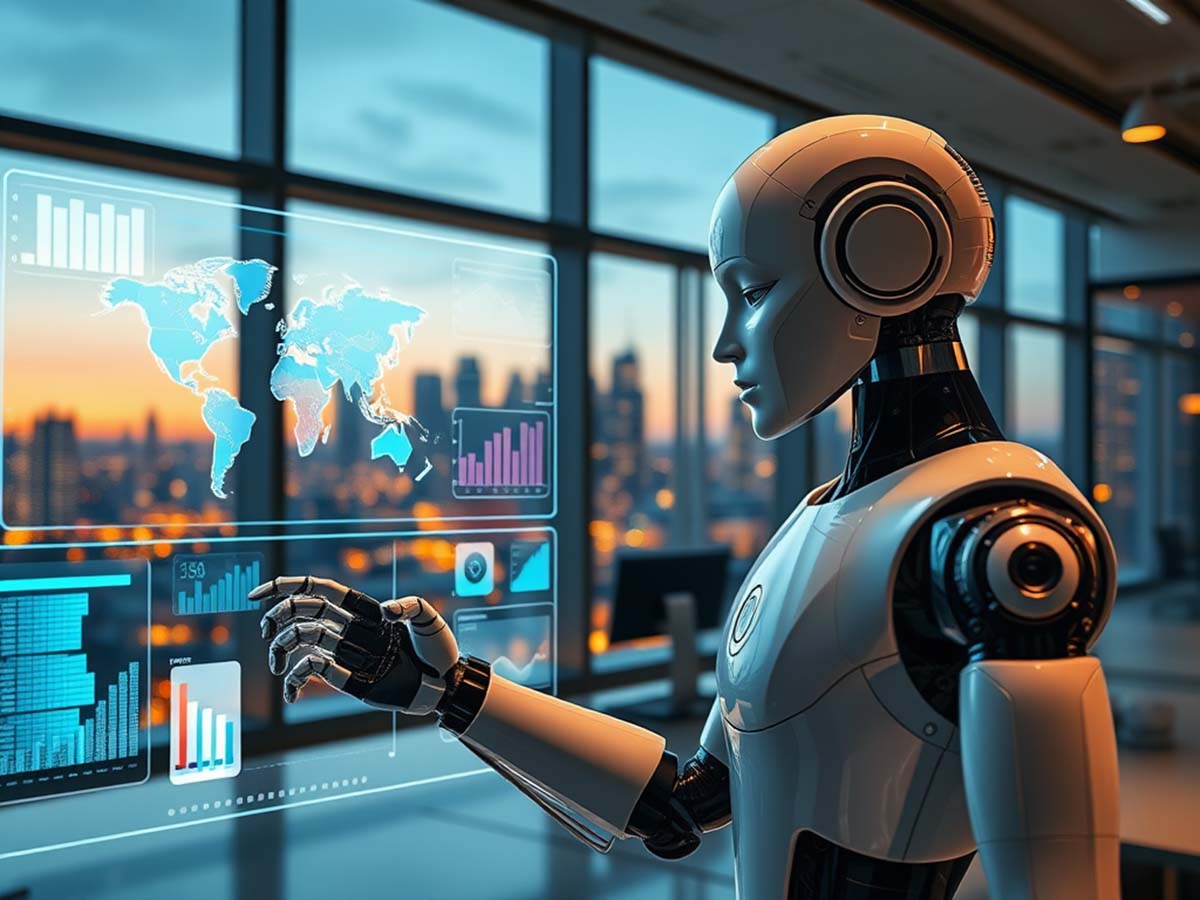
Technology continues to reshape the workplace, altering job roles, communication methods, and business operations. As innovation progresses, workers and companies must adapt to new systems and approaches. These changes impact industries in profound ways, influencing everything from hiring processes to daily workflows. Businesses looking to stay ahead are increasingly turning to digital tools for efficiency, which streamline operations and improve overall productivity.
Understanding how emerging technologies affect work environments can help employees and businesses navigate these shifts. With artificial intelligence, automation, and digital collaboration tools becoming more common, the future of work is evolving rapidly.
Automation and AI Streamline Tasks
Automation and artificial intelligence are transforming industries by handling repetitive tasks and improving efficiency. These technologies reduce human error, speed up processes, and allow employees to focus on more complex responsibilities.
Industries such as healthcare, finance, and retail are already seeing significant benefits from AI-driven solutions. Customer service chatbots, for example, provide immediate responses to inquiries, cutting down wait times and improving overall user experience. In finance, automated fraud detection systems analyze transactions in real time to identify suspicious activity, protecting businesses and customers alike.
AI-driven data analysis plays a crucial role in decision-making. Companies use machine learning algorithms to process vast amounts of information, uncovering patterns that would be difficult for humans to detect. Retailers rely on predictive analytics to forecast customer demand, ensuring they stock products more efficiently.
Although automation improves productivity, it also raises concerns about job displacement. Some roles traditionally performed by humans are now handled by AI-powered tools. However, new opportunities are emerging in fields that require human creativity, problem-solving, and oversight.
Remote Work and Digital Collaboration
The rise of remote work has changed how teams communicate and collaborate. With cloud-based tools and video conferencing platforms, employees can work from anywhere while remaining connected to their colleagues.
Remote work offers many benefits, including increased flexibility, reduced commuting time, and access to a global talent pool. Companies can hire skilled professionals from different regions, fostering diversity and innovation. Employees enjoy a better work-life balance, leading to improved job satisfaction and productivity.
However, remote work also presents challenges. Without face-to-face interactions, misunderstandings can arise, and team cohesion may weaken. Employers must prioritize clear communication strategies to ensure collaboration remains effective. Many businesses have adopted project management platforms to assign tasks, track progress, and maintain transparency among team members.
The shift to remote work has also led to an increase in cybersecurity concerns. Companies must implement strong security measures to protect sensitive data. Employees working from home are encouraged to use virtual private networks (VPNs), multi-factor authentication, and encrypted communication channels to maintain security.
Despite these challenges, remote work is here to stay. Businesses are finding ways to blend in-office and remote work through hybrid models that offer flexibility without compromising collaboration.
The Rise of Smart Workplaces
Technology is making offices smarter, creating environments that enhance productivity, comfort, and efficiency. Businesses are integrating advanced systems to streamline operations and improve the overall work experience.
One of the most significant developments in smart workplaces is the Internet of Things (IoT). Smart sensors adjust lighting and temperature based on occupancy levels, reducing energy waste while providing a comfortable work environment. AI-driven security systems monitor office spaces, detecting unusual activity and ensuring workplace safety.
Wearable technology is also making its way into the office. Smartwatches and fitness trackers help employees monitor their health, encouraging movement and reducing the risk of sedentary-related illnesses. Some companies use biometric authentication to enhance security, allowing employees to access workstations through fingerprint or facial recognition.
Augmented reality (AR) and virtual reality (VR) are also shaping modern workspaces. Businesses use AR for training simulations, allowing employees to practice tasks in a risk-free environment. VR creates immersive meeting spaces, making remote collaboration feel more natural and engaging.
These innovations contribute to a more efficient and enjoyable work environment, allowing employees to focus on tasks without unnecessary distractions.
Upskilling Becomes a Necessity
As technology continues to evolve, employees must adapt by learning new skills. Upskilling has become an essential part of career development, ensuring that workers remain valuable in a changing job market.
Many industries require specialized knowledge in emerging technologies. For instance, data analysis, programming, and cybersecurity are in high demand. Employees who invest time in learning these skills position themselves for better career opportunities.
Online learning platforms make skill development more accessible than ever. Employees can take courses on artificial intelligence, cloud computing, and other advanced topics without needing to enroll in traditional education programs. Some companies even offer tuition reimbursement and training workshops to help employees stay up to date with industry trends.
Mentorship and professional networking are also crucial for career growth. Connecting with industry experts provides valuable insights and guidance. Employees who actively seek mentorship and engage in professional development programs are more likely to advance in their careers.
Employers also benefit from investing in upskilling programs. A workforce with up-to-date skills improves productivity, innovation, and overall business success. Companies that prioritize employee growth create a culture of continuous learning, leading to better retention rates and job satisfaction.
The Human Element in a Tech-Driven Workplace
While technology improves efficiency, the human element remains essential in the workplace. Soft skills such as communication, critical thinking, and emotional intelligence are more valuable than ever.
Jobs that require creativity, leadership, and empathy are less likely to be replaced by automation. Professionals in fields such as marketing, healthcare, and education rely on personal interactions and decision-making abilities that machines cannot fully replicate.
Organizations are beginning to recognize the importance of balancing technology with human-centered approaches. Businesses that encourage teamwork, adaptability, and problem-solving skills create work environments where employees thrive alongside technological advancements.
Key Considerations for the Future of Work
- Adaptability – Employees who embrace change and continuously learn new skills will remain valuable.
- Digital Literacy – Understanding how to use emerging technology effectively is essential for career growth.
- Security Awareness – With the rise of remote work, cybersecurity knowledge is crucial to protect personal and company data.
- Collaboration – Teams that communicate well will succeed in both traditional and digital workspaces.
- Creativity and Critical Thinking – Machines handle repetitive tasks, but human innovation drives progress.
Preparing for the Future of Work
As emerging technologies reshape industries, individuals and organizations must remain proactive. Staying informed about trends, developing new skills, and embracing change will ensure long-term success.
The future of work is not just about automation and AI but also about how people adapt, innovate, and find new ways to thrive. Those who focus on growth, learning, and collaboration will be well-positioned for success in an ever-changing professional landscape.


No Comments